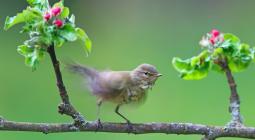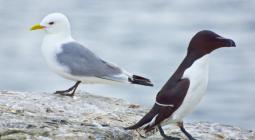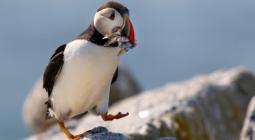Bird that migrates to Victorian wetlands slated for wind industry terminal added to threatened species list
The sharp-tailed sandpiper migrates from Siberia to a Port of Hastings site that Tanya Plibersek last week blocked a state plan to develop
A migratory shorebird that visits globally important wetlands the Victorian government wanted to dredge to make way for an offshore wind industry terminal is among eight birds added to the nation’s threatened species list.
The sharp-tailed sandpiper migrates from Siberia for the Australian summer and is now listed in Australia as vulnerable.
The sandpiper is a visitor to the Western Port wetlands that is a proposed site for a terminal to serve the state’s emerging offshore wind industry.
The environment minister, Tanya Plibersek, last week blocked a plan to build the terminal at the Port of Hastings that would have dredged up to 92 hectares (227 acres) of the wetlands and reclaimed 29 hectares of seabed. The plan was “clearly unacceptable”, the minister said.
Also appearing on list for the first time is the Terek Sandpiper which is a visitor to internationally significant wetlands at Toondah Harbour near Brisbane.
Developers want to build a marina, units and restaurant complex at Toondah that conservationists say will cause unacceptable damage to the wetlands. Plibersek is expected to make a decision on that application later this year.
The Australian Conservation Foundation on Wednesday said the minister had “made the right decision” on the Port of Hastings plan.
Kelly O’Shanassy, chief executive of ACF, said: “We need to build renewables fast and there are going to be impacts to nature from all developments. But we need to make sure the most important areas with high conservation values are off limits to all developments, including renewables.”
She said the area of Australia needed for renewables was small and vast areas had already been cleared of habitat. “We don’t need to choose between nature or renewables,” she said.
She said Plibersek’s “sound decision” at the Port of Hastings should be followed up by a rejection of Walker Corporation’s plans for Toondah Harbour.
The sharp-tailed sandpiper was added to the threatened species list after several studies recorded sharp declines of the birds of between 60% and 24% over just three generations.
One recent analysis suggested the numbers of the birds globally – estimated at 71,000 adults – had stabilised. They are found mostly in the south-east of the country at coastal and inland locations.
Two of the migratory species – the black-tailed godwit and the common greenshank – are considered to be at higher risk of extinction, and have been listed as endangered.
Other species listed as vulnerable are the ruddy turnstone, Latham’s snipe, Asian dowitcher and grey plover.
The threat to four further migratory species has been downgraded.
The Nunivak bar-tailed godwit has been upgraded to endangered from a previous threat category of vulnerable. The Northern Siberian bar-tailed godwit was considered critically endangered, but is now endangered. The red knot and great knot are now both considered vulnerable after previously having a higher threat status.
Cover photo: The sharp-tailed sandpiper was added to the threatened species list after several studies recorded a sharp decline in numbers. Photograph: Angus Emmott/Richard Kingsford






